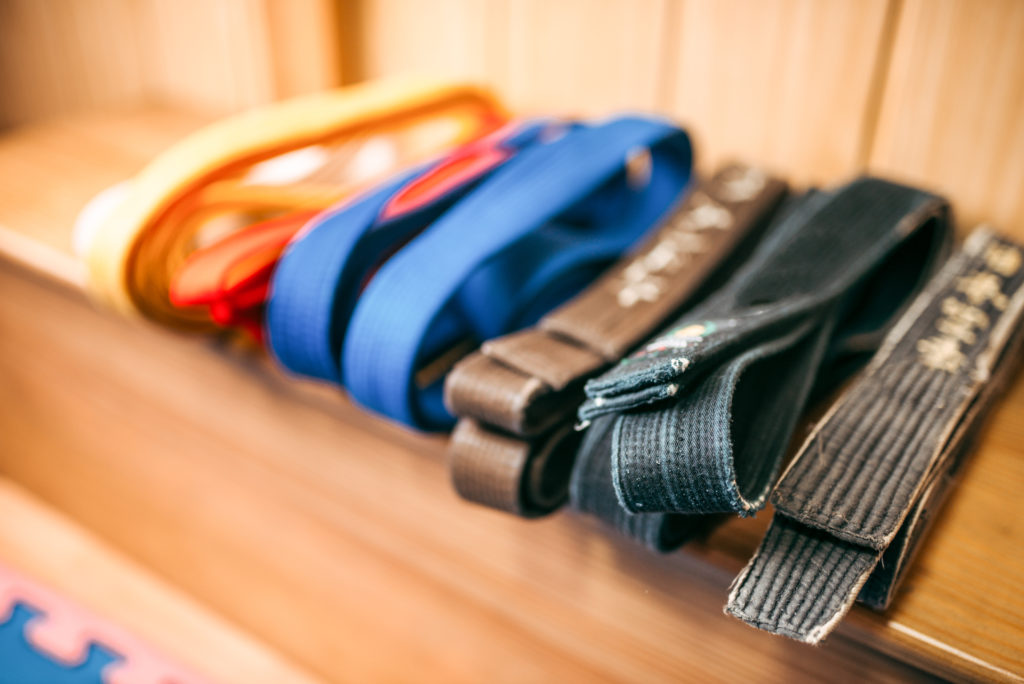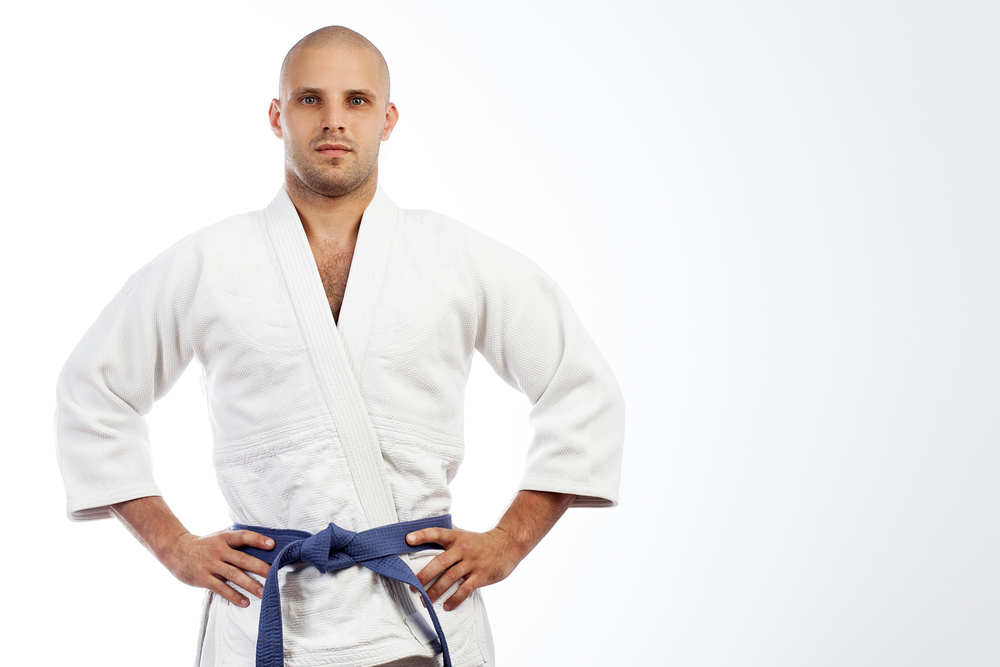Brazilian Jiu-Jitsu is a very practical martial art.
Along with muay thai and boxing for stand up striking, BJJ is essential in any MMA fighters skill set.
And many martial artist, BJJ or not, recognize the dedication required to achieve a blue belt in Brazilian Jiu Jitsu.
But just how long does it take to get a BJJ blue belt?
Belts aren’t always awarded on the basis of a syllabus, rather the practical performance of a student is judged before they are promoted with either a stripe or a belt level.
For self-defense focused systems of Jiu Jitsu such as Gracie Jiu Jitsu, there is a specific curriculum to follow. For competition focused BJJ schools, competition and especially winning can help you progress quicker.
But at the end of the day it is all up to your instructors and they would know best when you are ready.
BJJ Belt Levels
In Jiu-Jitsu, there are 5 kinds of belts, which are:
- White
- Blue
- Purple
- Brown
- Black
Each belt level is gained after earning a certain number of stripes on the previous belt.
There are some belts like the coral belt and red belt that are quite rare.
Now even though a blue belt is only the second belt in the system, it can take a long time to get one.
So, if you are wondering how long BJJ belt transitions take, keep reading to learn more.
How long does it take to get to the Blue belt in BJJ?
Well, the answer to this question depends a lot upon how consistently you train, and how talented you are.
Some students who are naturally gifted might even get promoted to blue belt within a year.
Whereas for some people, it can take quite a bit longer.
In general, it can take an average person somewhere between 1 and 3 years to get a BJJ blue belt.

To become a blue belt, you need to be familiar with all the basics of Jiu-Jitsu.
You need to learn several techniques to qualify as a blue belt which includes submissions from the guard, and other positions, guard passing, takedowns, escapes, sweeps, some solo drills, and self-defense techniques.
Moreover, there is also an age limit for each Jiu-Jitsu belt.
To be a blue belt, you need to be at least 16 years old.
In general, a Blue belt is defined as someone who can defend themselves against a larger untrained opponent.
If you are a white belt, and you want to be promoted as soon as possible, here are some things that you need to do to get your blue belt within a year.
i)First and foremost, the most important factor is Consistency.
You simply need to train regularly and be dedicated. Most students take about 2 classes per week as a white belt, however, if you want to learn more quickly, you can also take more than 3 classes a week.
Keep in mind that regular training and consistency go beyond attending classes.
You need to put time into Jiu-Jitsu outside of class as well.
You need to do solo drills, build up your strength, and learn more about the sport. Understand that the mental aspect of Jiu-Jitsu is also very important, therefore, you should follow the sport, and learn new techniques and strategies on your own.
Watching Jiu-Jitsu competitions, and even MMA can give you a lot of insight into the sport and help you improve dramatically.
ii)Secondly, start competing as soon as possible.
Though this isn’t a requirement for all schools, it does help you get a blue belt faster. Competing allows you to test and show off your skills.
Though winning tournaments is obviously good, it isn’t that important as long as you are competing.
Taking part in tournaments also allows you to grapple with different opponents that you are used to, which has a positive impact on your overall skill.

iii) Stay healthy
Lastly, one of the most important things to become a blue belt as quickly as possible is to avoid injuries.
This is also directly related to overtraining.
Mobility and recovery are also vitally important parts of staying healthy so you can achieve a BJJ blue belt in the most efficient way possible. This way you will not miss practice or competitions because of injuries.
Mobility and flexibility in the joints are key.
Hip mobility and full body flexibility can be achieved with dedicated time spent working on these areas.
Increased mobility will in addition to reducing risk of injury, also help improve your BJJ with greater range of motion. more efficient movement and greater flexibility.
When you start rolling and competing as a white belt, injuries are a lot more common, since you and your opponent aren’t that good at controlling your weight, and how it falls.
Therefore, be very careful, and make an effort to avoid injuries at all costs.
One of the most important tips that I can give you is that don’t be afraid to tap.
An injury will do a lot more damage to your career than a loss.
Can you get a blue belt in BJJ in 6 months?
The IBJJF has specified a certain time for which a BJJ practitioner needs to remain at one belt level before they can be promoted.
For instance, you need to stay at a blue belt for 2 years before you can get a purple belt, and you need to stay at a purple belt for at least 1.5 years before moving to a brown belt.
However, there is no specific time for the transition between white and blue belt, therefore, it is entirely possible to get a Blue belt in 6 months.

However, it is quite rare for people who start training as adults.
Children who compete at junior levels, and get their junior belts can even skip the white belt altogether and become a Blue belt when they turn 16.
However, this decision depends on their instructor. In some cases, Juniors with green belts can be promoted directly to the purple belts as well.
How good is a BJJ blue belt?
Now, this also depends on several factors, like the school a person trains, and how active they are.
However, according to Rener and Ryron Gracie, a BJJ blue belt should have an extensive understanding of the basic self-defense principles of Jiu Jitsu.
More importantly, they need to show that they are capable of defending themselves against a larger untrained attacker in a real-life confrontation.
Therefore, you can say that a BJJ blue belt is quite good, especially when it comes to the self-defense aspect of the sport. You can confidently say that a BJJ blue belt can control and defeat more than 90 percent of the world population in single unarmed hand-to-hand combat.
So, to put it in simple words, a BJJ blue belt is not someone you want to mess with.
This is especially if you do not have any type of training or experience in grappling and street self defense.
Final thoughts:
Becoming a BJJ blue belt is not easy, it can take a lot of effort and sometimes a lot of time as well.
However, keep in mind that it is totally worth it, as it can completely change your life.
You will take some of your best friends on the mat, and gain loads of confidence in yourself as you train hard to get better and better at his incredible martial arts.



